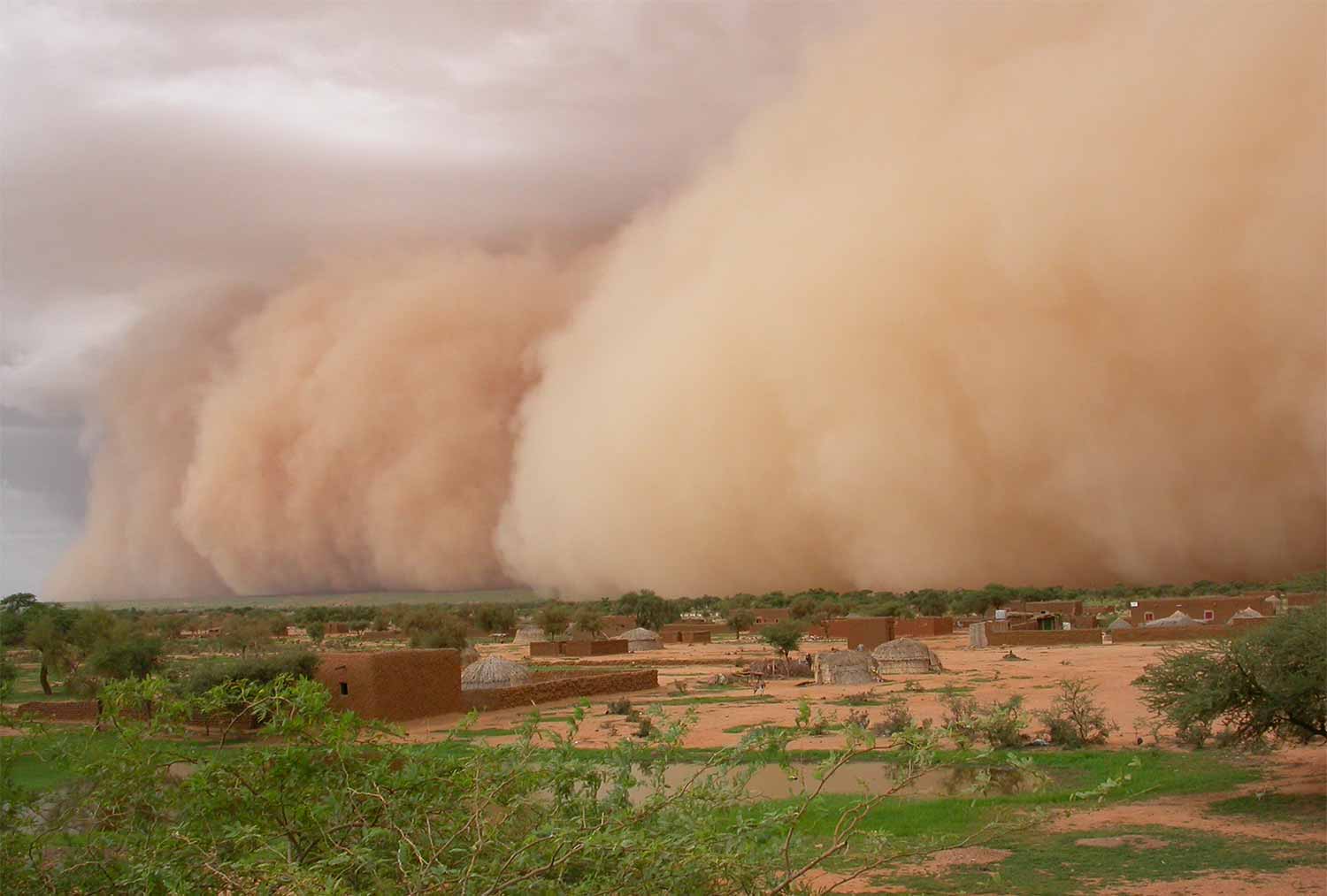Study: Climate Change Will Reduce the Amount of Saharan Dust in Atmosphere
A comprehensive look at the history of a global climate driver finds potential consequences of global warming
By:
- Robert Monroe
Media Contact:
- Robert Monroe - scrippsnews@ucsd.edu
- Mario Aguilera - maguilera@ucsd.edu
Published Date
By:
- Robert Monroe
Share This:
Article Content

Arrival of a wall of dust known as a haboob induced by a convective cold pool in Hombori, Mali. Photo by CNRS Photothèque, Françoise Guichard and Laurent Kergoat
Winds transport dust from the Sahara Desert around the world and influence weather and ecology as far away as the Caribbean and South America. Now a history of this transported dust led by researchers at Scripps Institution of Oceanography at UC San Diego reveals how climate change may alter its global-scale role.
In a study appearing in the March 24 issue of the journal Nature, Scripps Oceanography climate researcher Amato Evan addresses the causes of year-to-year fluctuations in the transport of African dust and outlines a methodology for estimating how dust has been transported over the past 150 years. Evan and colleagues from the National Center for Scientific Research in France project that in a warming world, dust emissions from the Sahara will diminish over time. That will have varying consequences ranging from a potential for more rainfall in sub-Saharan Africa to an intensification of Atlantic hurricanes.
“This paper is the first to demonstrate a connection between human-caused warming of the planet and the amount of dust that is pumped into the Earth’s atmosphere,” Evan said.
The paper proposes that the Sahara will deposit less dust around the world because regional wind speeds will decrease. The conclusion is in line with other research that suggests that global warming will cause a general slowdown of atmospheric circulation at tropical latitudes.
To reconstruct the history of dust transport, the researchers analyzed winds from “reanalysis” data sets, which create simulations of past climate using historical meteorological data as a constraint. They also used satellite and coral data to assemble historical reconstructions of atmospheric dust.
The record revealed periods of intense dust transport between the 1910s and 1940s and the 1970s through 1980s. The 2000s were among relatively low periods of dust transport.
Once aloft, dust can cool the surface of the planet by reflecting sunlight back to space and providing shade to the surface. Saharan dust, which blows predominantly to the west, is known to seed Caribbean islands and the Amazon basin with nutrients.
Looking into the future, the researchers suggest that diminished winds will transport less dust and if that happens, the lessened cooling effect will help amplify the ocean warming that provides fuel to Atlantic hurricanes. The authors note that of the climate models that simulate dust, most do not depict this dust reduction as the world warms.
“Thus,” they conclude, “it is plausible that current temperature projections for the tropical Atlantic through the Caribbean are too conservative.”
Co-authors of the study, “The Past Present and Future of Saharan Dust,” include Cyrille Flamant, Marco Gaetani, and Françoise Guichard.
Share This:
You May Also Like
UC San Diego is Strengthening U.S. Semiconductor Innovation and Workforce Development
Technology & EngineeringStay in the Know
Keep up with all the latest from UC San Diego. Subscribe to the newsletter today.



